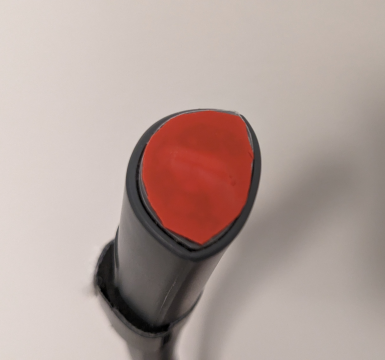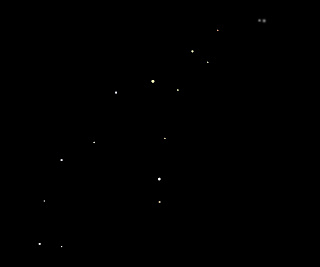Don’t be that guy. The one with the red headlamp who thinks he’s got this covered. No white lights on the observing field, right? Wrong. Even really dim red headlamps, which
are rare, will zap your fellow observers in the eyes as soon as you look at them. Which you will do. Then there goes the night vision. And your invitation back.
Don’t get me wrong, I love headlamps because they keep my hands free. But I’ve learned that wearing them around others is inconsiderate. Because I will zap them in the eyes.
It’s our natural tendency to look at others when we talk to them.
There are some nice hand held red LED flashlights- the Rigel Systems 2-LED red or mini, for example- but often you need both hands free.
So what’s an astronomer to do?
My current solution is to take a white LED neck light and cover one or both of the lenses with red taillight lens tape [or red nail polish]. I picked up a Glocusent upgraded neck light and modified it for astronomy
use this way.
 |
Glocusent upgraded version. Older version is a
bit thicker and has separate on/off for each light. |
 |
| The modification keeps the white light for when needed. |
Like headlamps, neck lights keep your hands free, but they aim downward and not into other people’s eyes. Perfect for working on stuff or searching the ground for the filter you dropped
in the dewy grass. They have flexible arms that can be positioned as needed. The only problem is that currently almost all of them are white LEDs. I found one with a red LED, but I figured I’d rather get other features
I want and just filter the lenses myself. [8/24/24 update: The only downside of the neck light I have found so far is that if you are bending over toward the ground, the light kind of just hangs loosely from you neck and you'll have to guide the light where you need it with your hand. To remedy this, you can tuck one side under your outer layer of clothing at the neck, which anchors it well.]
Neck lights have two lights, but some are controlled separately. I opted for one with a single on/off button since it would be easier at night. The Glocusent has three different color temperature
settings and three brightness levels, with buttons on the opposite arm. Many lights have similar features.
Look for a model that has a flat light surface so it will be easy to tape it up. I used one layer of red taillight tape, and with the color temp and brightness settings, I have
all the range I need. [8/24/24 update: The tape didn't stick too well after a while, so I just painted a couple coats of red nail polish on the lens and it's just like having the tape, but I know it won't fall off.] In addition, I just capped off the other side to keep it a white light for when I need it. The caps are a tight friction fit.
 |
| Nice flat surface for the tape. |
 |
| Tape in place. |
I cut the caps from a 1/8 inch black craft foam sheet, then rolled and wrapped them with Gorilla (duct) tape. They slip on tightly and conform to the odd shape of the light housings. Note
the pieces of fuzzy Velcro I put on buttons to provide tactile cues in the dark. Pretty simple.
 |
| Open cover for the red side. |
 |
| Closed cover for the white side. |
The caps also provide a recess for the lights, which further prevents the actual LED from shining in someone’s eyes and narrows the beam to a spot. Without the caps, the LEDs are visible
even when hanging down around your neck and they have a pretty wide “flood” style beam.
 |
This is what your friend sees.
|
 |
| This is what you see. It can get much dimmer. |
That’s it. These things go for around $20-25, they have rechargeable lithium-ion batteries, and will probably last as long as you would expect for the price. Great addition to your
observing kit, and your fellow observers will thank you. (Also makes a great reading light- who would have thought?)





















































